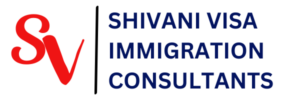AUSTRALIA VISITOR VISA CONSULTANTS
Best Consulting Firms in us
1. Introduction to Australia Visa
An Australia visa is an official document that allows a person to enter, stay, or work in Australia for a specific time. There are different types of visas depending on the purpose of travel, such as tourism, study, work, and permanent residency.
2. Types of Australia Visa
There are several types of Australian visas, including:
2.1 Tourist Visa (Visitor Visa - Subclass 600)
This visa is for people who want to visit Australia for a holiday, visit family, or do short business activities.
It is usually valid for 3, 6, or 12 months.
You cannot work on this visa.
2.2 Student Visa (Subclass 500)
This visa is for people who want to study in Australia.
The visa is granted for the duration of the course.
Students can work part-time (up to 48 hours per fortnight) while studying.
2.3 Work Visa
There are different work visas depending on the type of work and employer sponsorship.
Temporary Skill Shortage Visa (Subclass 482): For skilled workers sponsored by an employer.
Skilled Independent Visa (Subclass 189): For skilled workers who do not need sponsorship.
Skilled Nominated Visa (Subclass 190): For skilled workers nominated by an Australian state or territory.
2.4 Partner Visa
This visa allows the partner or spouse of an Australian citizen, permanent resident, or eligible New Zealand citizen to live in Australia.
It includes the Temporary Partner Visa (Subclass 820/309) and Permanent Partner Visa (Subclass 801/100).
2.5 Permanent Residency (PR) Visa
Permanent Residency allows people to live, work, and study in Australia permanently.
Some PR visas include:
Skilled Independent Visa (Subclass 189)
Skilled Nominated Visa (Subclass 190)
Employer Nomination Scheme (Subclass 186)
Regional Sponsored Migration Scheme (Subclass 187)
Business Innovation and Investment Visa (Subclass 888)
2.6 Working Holiday Visa (Subclass 417 and 462)
This visa allows young people (18-30 or 18-35 in some cases) to travel and work in Australia for up to one year.
The visa can be extended if specific work conditions are met.
3. How to Apply for an Australia Visa
3.1 Check Visa Requirements
Visit the official Australian Department of Home Affairs website to check visa options.
Choose the right visa based on your purpose of travel.
3.2 Gather Required Documents
Passport (valid for at least six months)
Visa application form
Proof of funds (bank statements, job letter, etc.)
Health insurance (if required)
Invitation letter (if visiting family or business purpose)
English test results (if required for work or study visa)
3.3 Submit Online Application
Most Australian visa applications can be submitted online via ImmiAccount on the Home Affairs website.
Pay the visa fee (amount depends on visa type).
Submit biometrics (if required).
3.4 Health and Character Requirements
Some visas require a medical examination.
Police clearance certificates may be needed to prove good character.
3.5 Wait for Processing
Visa processing times vary. Some visas take a few days, while others take months.
You can check your application status on the ImmiAccount portal.
4. Visa Fees and Processing Time
Visa costs depend on the type of visa. Below are approximate fees:
Tourist Visa: Around AUD 150
Student Visa: Around AUD 710
Work Visa: Varies, from AUD 1,000 to AUD 4,000+
Permanent Residency: Around AUD 4,000+
Processing time also varies:
Tourist Visa: 2 days to 1 month
Student Visa: 1 to 3 months
Work Visa: 1 to 6 months
PR Visa: 6 months to over a year
5. Visa Conditions and Obligations
Each visa has specific conditions, such as:
Tourist Visa: No work allowed.
Student Visa: Work up to 48 hours per fortnight.
Work Visa: Work only for the approved employer.
PR Visa: Must stay in Australia for at least 2 years to maintain status.
Failure to follow visa conditions can result in visa cancellation or bans from reapplying.
6. Visa Rejection and Appeal
6.1 Common Reasons for Visa Rejection
Incomplete application or missing documents
Insufficient funds
Failure to meet health or character requirements
Lack of strong ties to home country (for tourist visas)
6.2 What to Do If Your Visa Is Rejected
Check the rejection letter for reasons.
Appeal the decision (if allowed) through Administrative Appeals Tribunal (AAT).
Reapply with stronger documentation.
7. Living in Australia with a Visa
If your visa is approved, follow these steps:
Find Accommodation: Rent a house or stay with family/friends.
Open a Bank Account: Needed for transactions and salary.
Get a Tax File Number (TFN): Required for work.
Health Insurance: Some visas require private health insurance.
Follow Visa Rules: Always comply with visa conditions to avoid legal issues.
8. Conclusion
Getting an Australian visa requires proper planning, documentation, and meeting the requirements. Choose the right visa, follow the application process carefully, and ensure you meet all conditions. If you need help, consult the Australian Department of Home Affairs or seek assistance from a registered migration agent.
Australia is a great country with opportunities for work, study, and travel. A visa is the first step to exploring what Australia has to offer!
